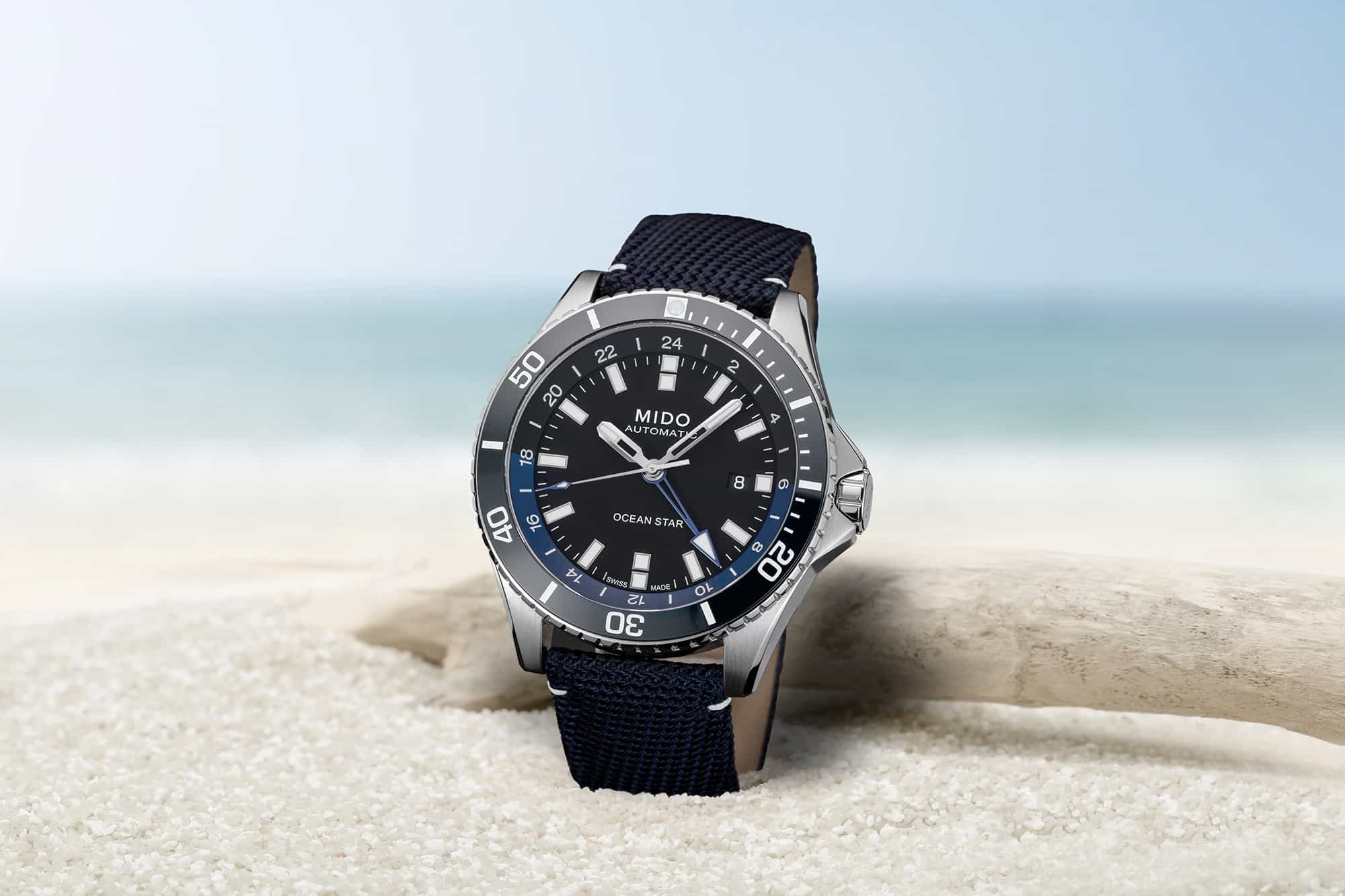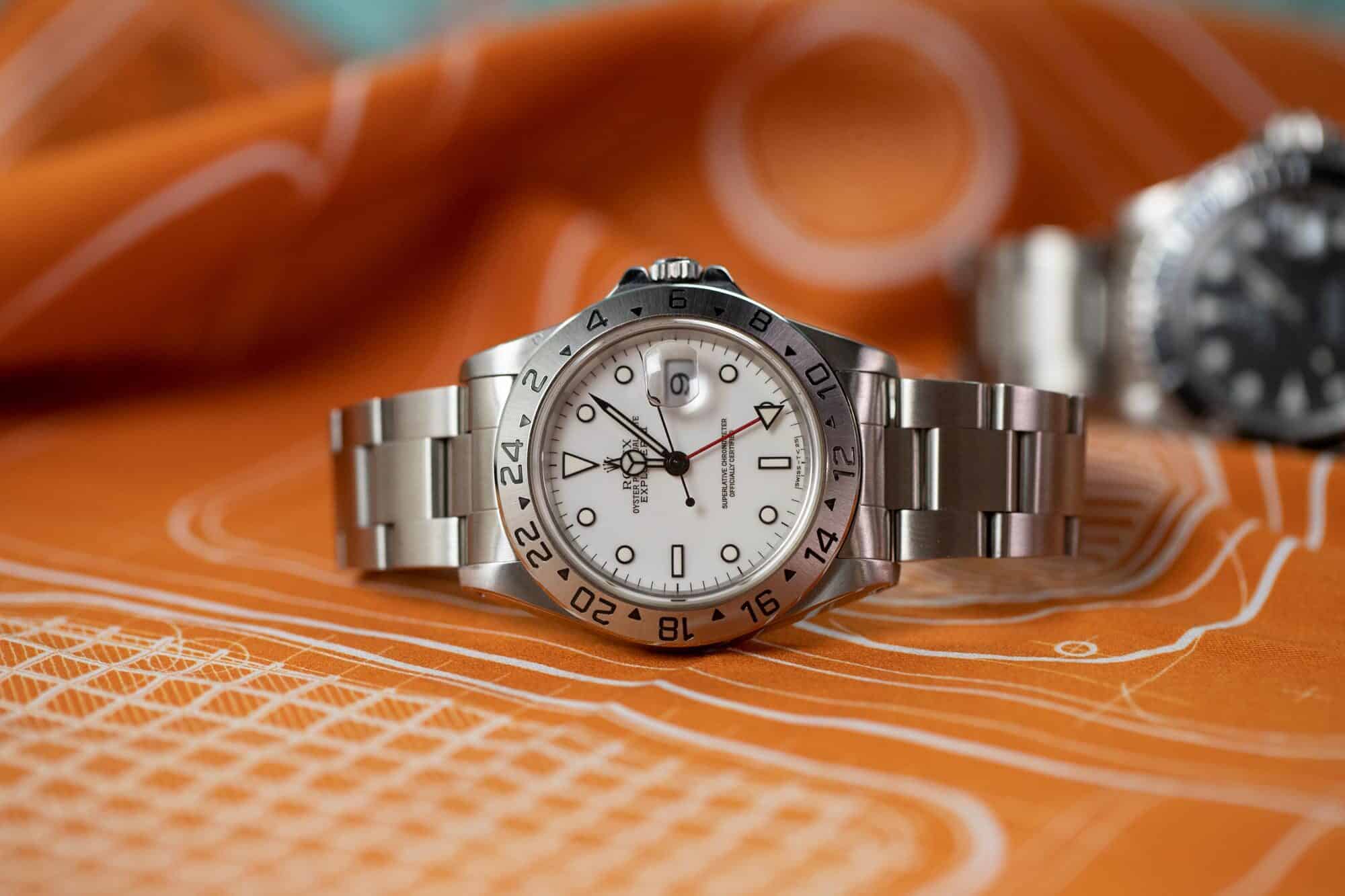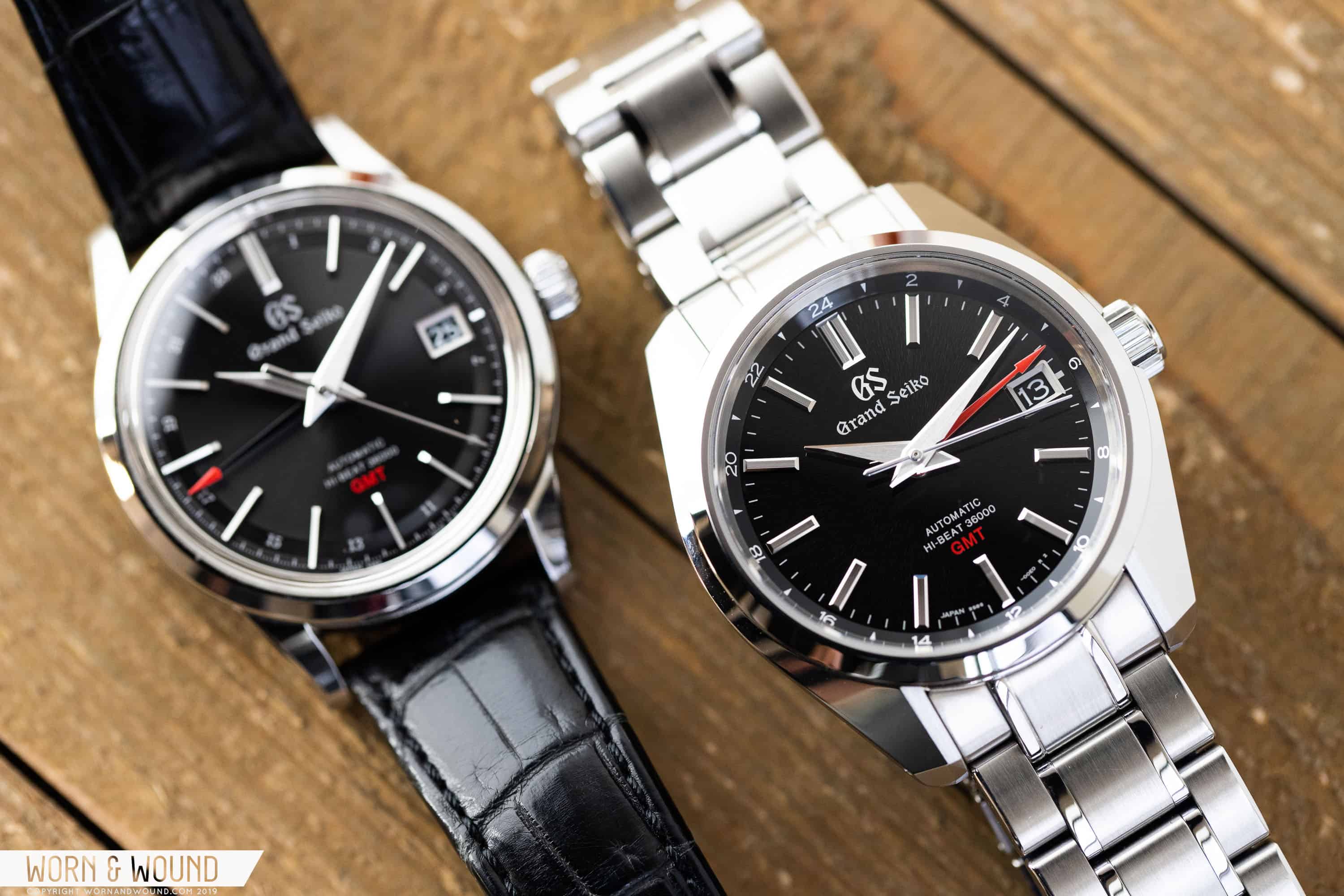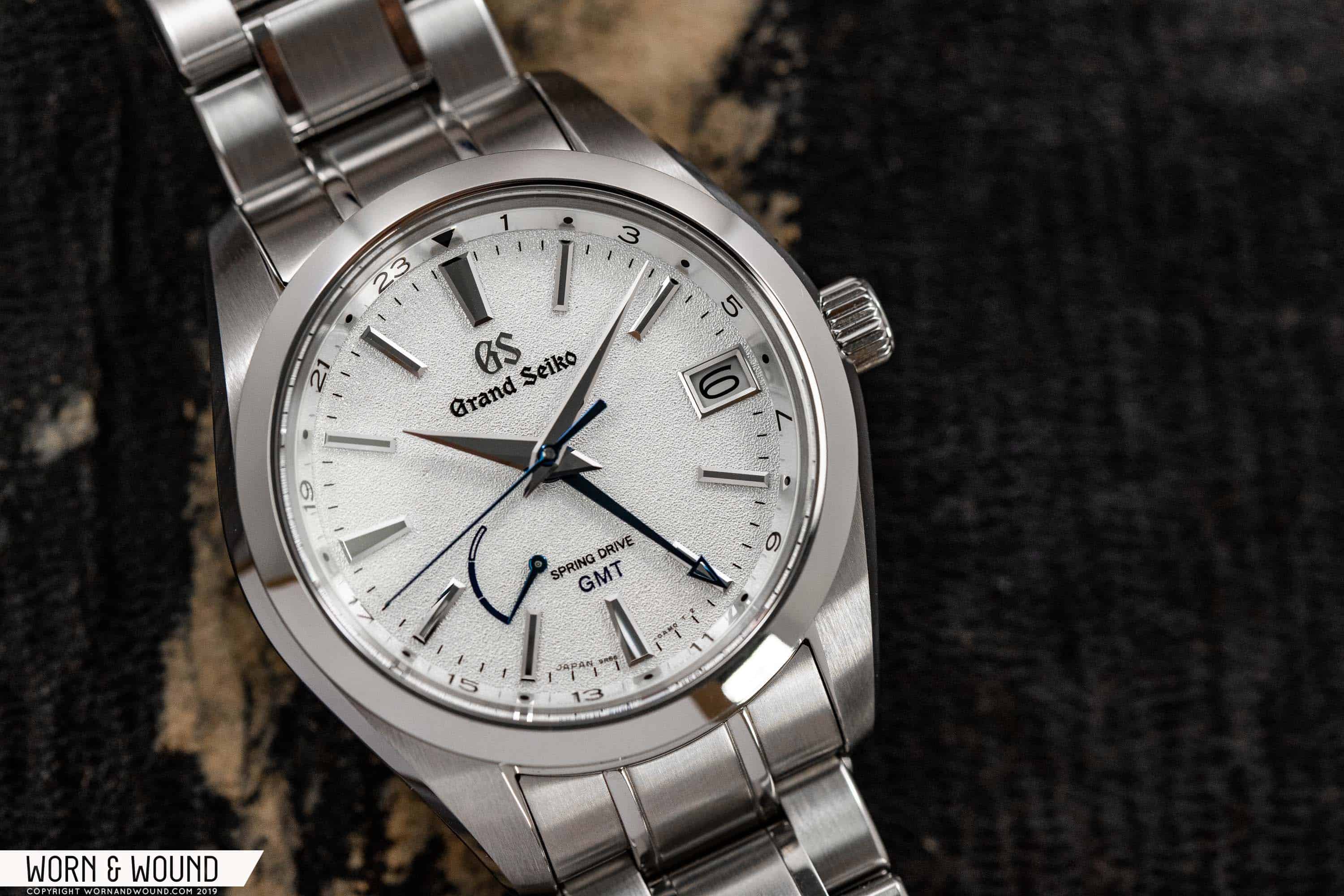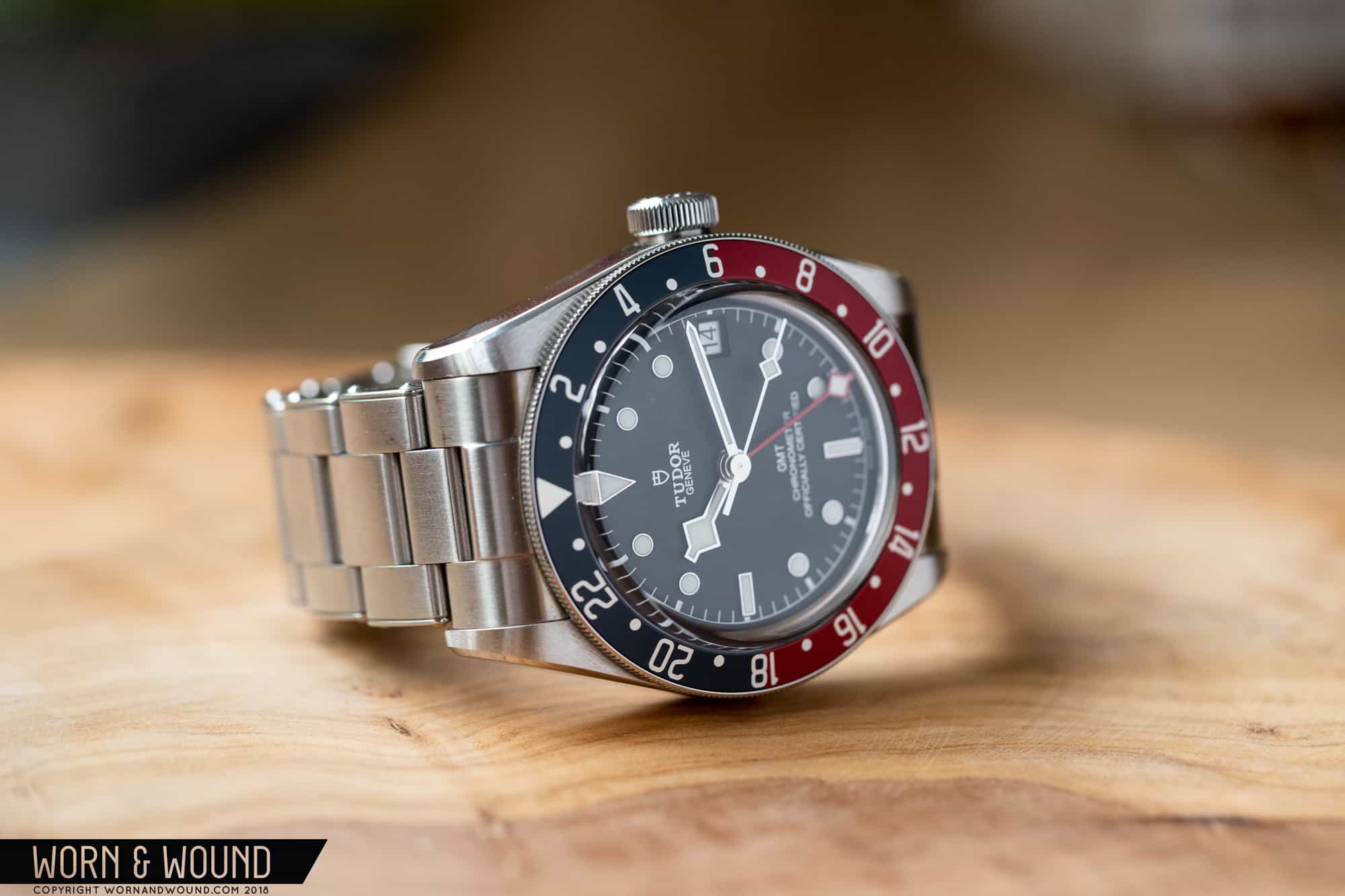Back in June, we recorded a podcast in which the Worn & Wound editorial team answered a question from a listener concerning our “dream” watch movements. Basically, if we could design the perfect movement, what features would we incorporate. Unsurprisingly, yours truly suggested an affordable, local hour jumping GMT movement, a feature set that I’ve long enjoyed and wished would make its way into timepieces of the more affordable variety. The other option, a GMT with an independently set 24-hour hand, is simply not as useful in my estimation, and while movements with this setup are featured in some very nice watches, they just don’t have the same utility as a “true” GMT.
Now, just months later, we’re greeted by the new Mido Ocean Star GMT. A quick look at the watch reveals a nice but somewhat pedestrian sports watch. It has a black dial, a blue (or black) ceramic bezel with a dive timer, and has a stainless steel case with a mix of satin finishing and highly polished surfaces. It’s definitely sporty, with a sail cloth style strap, big lumed hour markers, and 200 meters of water resistance. The GMT functionality conjures a sense of travel, adventure, and leisure. It’s also 44mm in diameter, a size that is likely to keep hardcore enthusiasts at a distance.









 Featured Videos
Featured Videos





